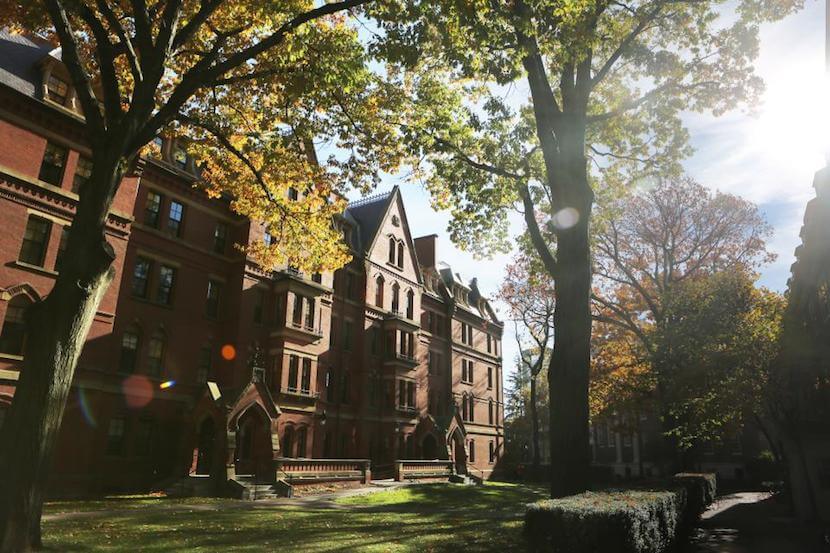Universities across the United Kingdom, Canada and the United States are making sustainable energy a priority on their campuses. These environmental initiatives are reducing energy costs, countering carbon emissions, and making a visible commitment to sustainability evident to all students. Students are also actively involved in efforts to provide sustainable energy.
[divider]
University of Essex, UK
Essex Business School at the University of Essex in Colchester, UK has opened the first zero-carbon school building in the UK. The focus of the building is a winter garden with an “Eden-like dome” that gives the building its own micro-climate. The building has a rainwater pond that recycles water for use in plumbing. The building is so energy-efficient that it saves more than one tonne of carbon every day.
Dean of Essex Business School Professor Geoff Wood spoke to the Chartered Association of Business Schools about the use of the new space. “Our new home creates a collaborative environment where students, staff and business partners can work together to solve global business challenges. The fantastic learning spaces we now have will also help our students develop the knowledge, skills and integrity to flourish in a global marketplace,” he said.
The school’s website offers a virtual tour and advertises the following features of the facility:
- Bloomberg Financial Market Lab, which provides access to Bloomberg business data, information and analytics used by accountants, managers and marketers across the globe;
- dedicated Student Services Team and inquiry desk;
- study pods and innovation booths for group-working;
- Bonds café with adjacent sun terrace;
- a postgraduate study area, providing IT access and quiet space for research students to work; and
- a dedicated MBA study area.
Aside from the positive environmental impact, there is also a strong message behind the university’s decision to build this space. Wood told the Chartered Association of Business Schools that the new building proves the university’s commitment to sustainability. He said, “the fact this new building is zero carbon shows how we don’t just talk sustainability and ethical business, we live it. The design reflects our commitment to responsible business practice in both our teaching and research.”
[divider]
Okanagan College, Canada
In Canada, Okanagan College has the second largest solar panel system in British Columbia. As a result, Okanagan College has been able to reduce its energy consumption per square meter by 32.2 per cent from 2007 to 2013. The college has set a goal of being energy net zero by 2025. Adding solar panels is a concrete symbol of the university’s commitment to this goal, and inspires the university’s students to prioritize sustainability and the environment.
[divider]
University of Wisconsin-Stout, U.S.
At the University of Wisconsin-Stout, the Stout Student Association’s Sustainability Council pioneered a solar energy project on their campus. The project will be installed in fall 2017, with thirty-six solar panels yielding 10.8 kilowatts. The project also includes the possibility for expansion up to 690 panels producing 207 kilowatts.
The Sustainability Council decided to start with thirty-six solar panels after a research study conducted by Next Step Energy LLC, whose mission was to determine the building that would be most feasible and effective for a solar panel project. The $5,000 study cost was funded by 2015-16 Green Fee funds, an annual fee for all students.
The total cost for these thirty-six panels is estimated at $66,280, which will be funded by the Green Fee Funds. The Sustainability Council also collaborated with the Seize the Grid campaign, “a national movement leveraging institutional power that prioritizes local, equitable energy for the well-being of the planet and society” and urges campuses to strive for 100% renewable energy by 2030.
The panels are just the technology for sustainable energy, fueled by student ideas. Simply, this project would not have been possible without the students’ passion for it. The project is more than installing some panels on a roof; it’s also a reminder of the goals UW Stout wants to achieve and promote. The project is “a historical mark that benefits both campus and community members,” said Kennedy Crever, one of the students involved in making this project possible, in The Dunn County News.
As students walk by the solar panels, they will always have a visible reminder of the possible change students can create on their campuses. The project proves that students are capable of questioning and reimagining what is often taken for granted, such as where the campus’ energy comes from, highlighting the power of a committed group to change the world around them. Crever told The Dunn County News that the group “wanted to provoke thinking like: ‘I can see how this is benefiting the campus; what things in my daily life could help benefit the environment as well?” Although the project focuses on sustainable energy and the environment, Crever’s statement extends beyond environmental issues – students have the capacity and capability to innovate positive change on their campuses and in their daily lives.



